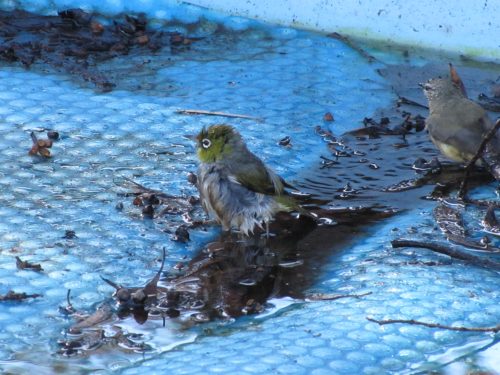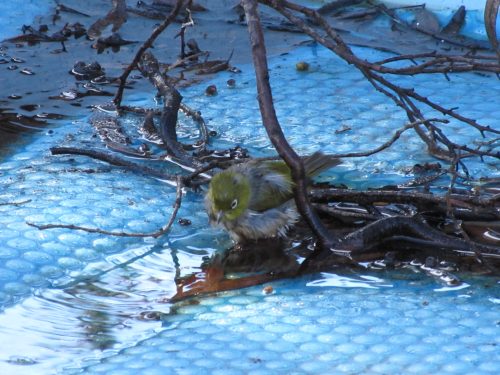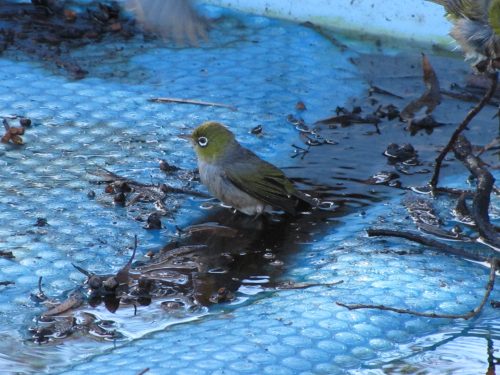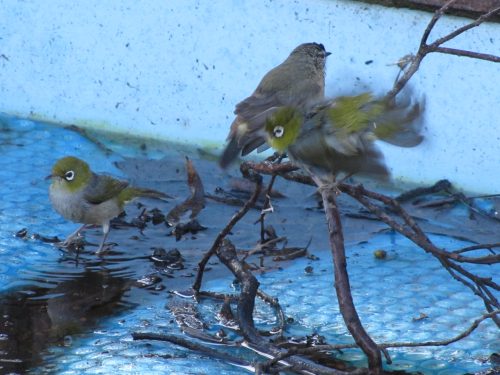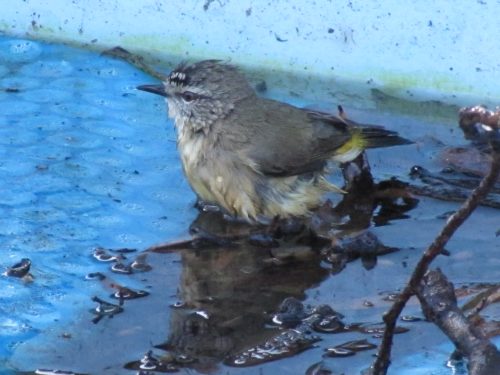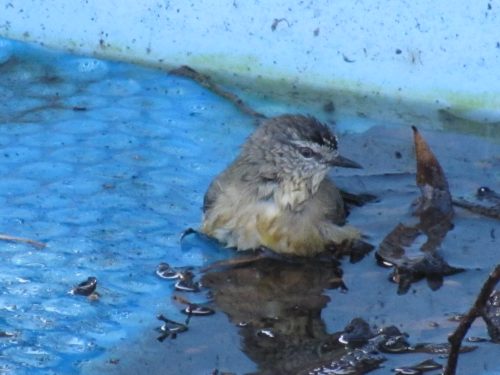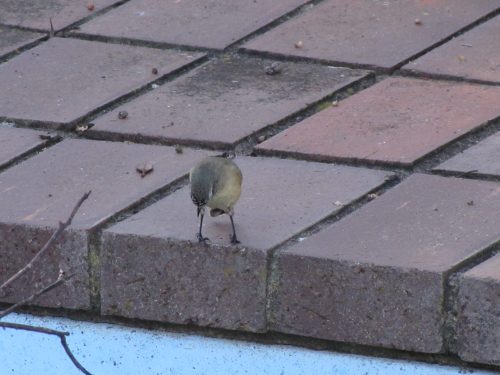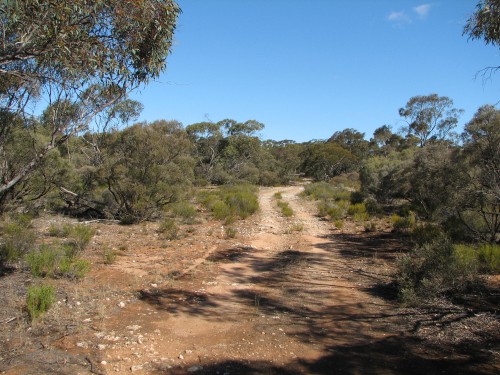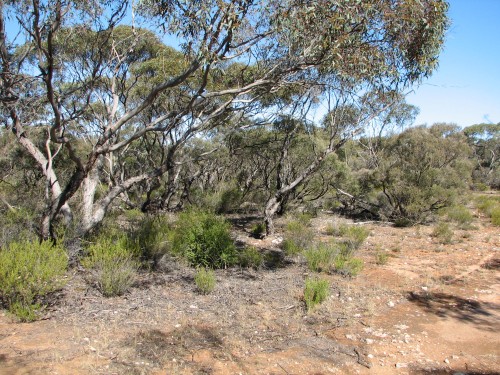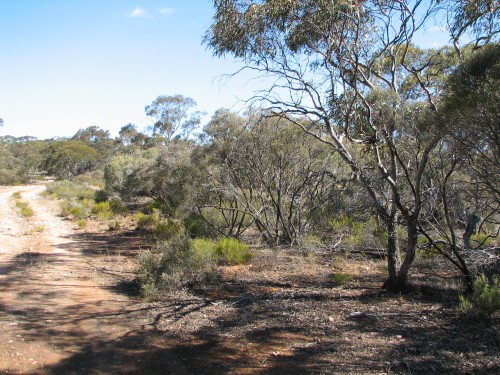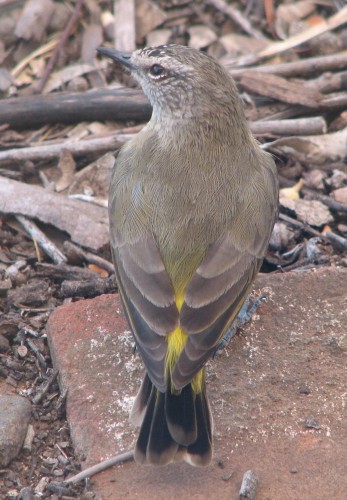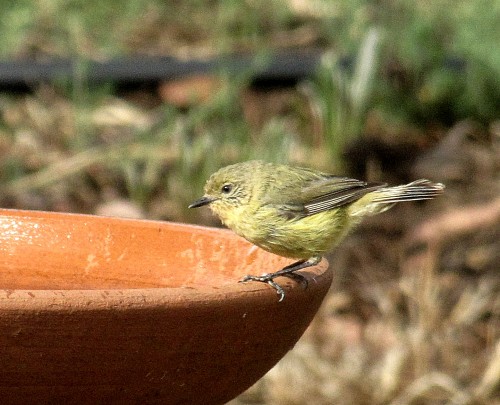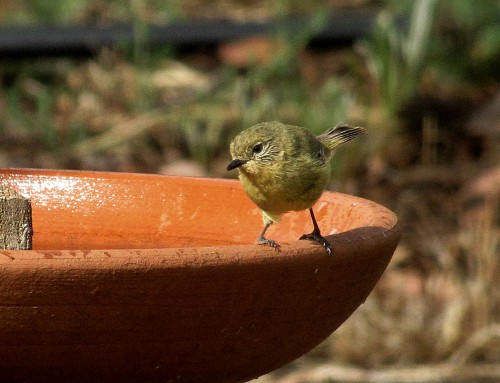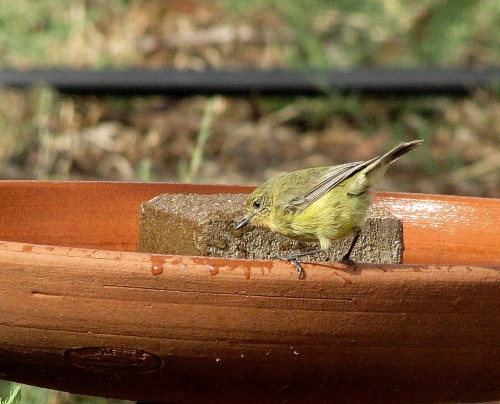Silvereyes come for a bath
In my last article here I posted some photos of Yellow-rumped Thornbills bathing in the small pools of water which gather after rain on our swimming pool solar blanket. On the same day, a small number of Silvereyes also came for a drink and to bathe. I have shown these in today’s post.
Our swimming pool is in our backyard, a short distance from our back veranda. On nice sunny days when it is not too hot in the middle of summer, or not too cold in the middle of winter, we enjoy sitting on the veranda to have our lunch. Sometimes we take a mid-morning break there for a cup of tea or coffee. We have also taken an afternoon break when gardening.
On all of these occasions, we enjoy the constant parade of birds in our garden, perched on the fence or in the trees nearby, and on the pool cover like the Silvereyes shown today. I often have my binoculars and camera at the ready while we sit there. On this occasion, I managed to get many photos of the Silvereyes and the Yellow-rumped Thornbills. A Grey Fantail was also fluttering around, but you will have to return in a few days’ time to see those photos in my next post.
The water that gathers on our swimming pool cover in the winter and spring months are visited by many birds over the course of each day. In addition to the species I have already mentioned, another frequent visitor is the Magpie Lark. Both the male and the female come on a daily basis, often perching on the pool safety fence and calling loudly, their antiphonal singing a delight to hear. (Antiphonal: when the two birds sing a duet in parts.)
Our resident Australian White-backed Magpies also come to drink, and the bossy Red Wattlebirds will chase the smaller birds off. White-plumed Honeyeaters flit in and out nervously, while the Peaceful Doves take their time, gradually getting closer and closer until they gather the courage to stoop and drink. The Crested Pigeons also come for a drink, though they are usually more interested in mating displays than drinking.
The Welcome Swallows occasionally swoop low over the pool but more often they are seen much higher in the air. The many House Sparrows and Common Starlings come frequently to drink and bathe, but the resident Mallee Ringnecks rarely do so; they prefer to feed in the nearby trees. The Willie Wagtails, however, are frequent visitors to this part of the garden.
As you can see, it is never boring in our garden if you are a birder like myself.
Good birding,
Trevor
PS: Over the years, I have written articles about all of the birds mentioned in this article. To see photos of them, and to read more about each of them, use the search facility in the top right-hand corner of any page.
Thornbills come for a swim
In our garden, we have a swimming pool. At the moment, it is more of a swamp. It will need a LOT of cleaning before the warm summer days come blowing in from the north over the coming months. We enjoy our pool on those hot, summer nights because it is so relaxing. And the exercise is good for us, too. (When we have the energy!)
We also have a solar blanket on the pool. This has a number of purposes:
- It warms the temperature of the water so that we can enjoy an extended swimming season, even in the cooler months.
- It reduces the need for chemical treatment to keep the water safe for swimming.
- It reduces evaporation; our water prices in South Australia are some of the highest in the world and the blanket minimises the amount of topping up the pool needs, thus saving money.
- It keeps things like leaves from nearby trees out of the water which saves me time and effort cleaning the pool.
With the solar blanket on during the winter, the rain we have had tends to gather on the surface in pools. Many of our resident bird species take advantage of this fact. They come to either drink or to bathe in the water. Recently, a small flock of Yellow-rumped Thornbills did just that. they had a glorious time splashing around in the water. They totally ignore the nearby bird baths. Why use a bird bath when you can bathe in your own swimming pool?
Good birding,
Trevor
Further reading:
Birding in Lowan Conservation Park
A few Sundays ago we had a break in our cold, wintry weather and we went for a drive to Lowan Conservation Park, a 40 minute drive north east from home in Murray Bridge, South Australia. The park is about 15 kilometres south east of Bowhill. I had visited this park on several previous occasions and found that the birding can be either a feast or a famine; it all depends largely on what is in flower, or the weather conditions.
The park is predominantly mallee woodland (see photos) with a mixture of other smaller scrubs and bushes. My wife has written about some of the plants on her site here.
On our most recent visit I didn’t even bother to take any photos; I saw no birds to photograph, well, none within range. And while we had our picnic afternoon tea in the sun I heard very little. It was a real struggle to get a short list of birds – mostly heard. (PS The photos on this post were taken on another visit.)
Bird list:
- Little Raven
- Mallee Ringneck
- Grey Shrike-thrush
- Weebill
- White-winged Chough
- Singing Honeyeater
- Australian Magpie
- Grey Butcherbird
- Galah
- Grey Fantail
- Noisy Miner? (or Yellow-throated Miner? – I only heard them)
- Striated Pardalote
That is not a great list, but there was not much flowering. In a park of some 660 hectares one would expect far more honeyeaters, but the mallee has to be in flower. Honeyeater species I would expect to see – or already have seen on other occasions – include: Striped, White-fronted, White-eared, White-plumed, Spiny-cheeked, Purple-gaped, Yellow-plumed, Brown-headed, New Holland and Red Wattlebird.
In addition to the honeyeaters I would expect to see more parrots, pigeons, wrens, thornbills, chats, woodswallows, robins (I did see one, but it flew off before I could get a positive ID), owls, nightjars, frogmouths, swallows, cuckoos, eagles, kites, falcons and even a Malleefowl or two. I have seen two Chestnut Quail-thrush there many years ago; I hope that they are still around.
I guess that the best time to visit would be in the spring, when there is a chance of more flowers. I think that it might be worth camping there overnight. By the way – there is only a rough, stony and sometimes sandy track through the park and NO facilities at all.
Trevor
Further reading:
Back to birding
Happy New Year readers.
First, an apology.
Sorry that I haven’t posted on this site much in recent months, not because I have lost interest or opportunities. Life has been a little rough in recent times with a number of health issues. Some of these have been dealt with and I am hopeful that things are improving. I hope to get out to do more birding and photography in the coming months, so stay tuned.
A few days ago I had a close encounter with several Yellow-rumped thornbills. I didn’t have the camera with me at the time, so the photo above was taken some time ago. On this occasion I was looking over the fence around our swimming pool watching the water coming from the filter as I was backwashing it. It was quite a hot day and three thornbills were attracted to the water gathering nearby.
One of the birds landed on the fence less than a metre from me, while the others hopped around on the ground less than two metres away. I love close encounters with the birds we have in our garden. Some of them can be quite confiding and can come very close. It is moments like this one that that makes me sometimes think that I should carry my camera with me on all occasions when in the garden.
Good birding.
Yellow Thornbills in our garden
Yesterday while having breakfast I observed a thornbill sized bird flitting around and on one of the birdbaths in our garden. I reached for my binoculars – they are always in easy reach from where we often sit to have our meals – and quickly identified it as a Yellow Thornbill. This is one species I don’t observe every day in our garden, but suspect that they are actually a resident breeding species, that is, they are present every day and nest in our garden.
More common is the Yellow-rumped thornbill which seems to be all over the garden at any given time on any given day. On sunny, still days the air can be filled with their twittering.
The Yellow Thornbill – also known as the Little Thornbill – is a widespread species found in eastern Australia, from southern Queensland through much of New South Wales and Victoria and into south eastern South Australia.
